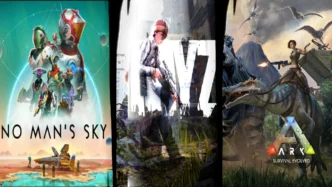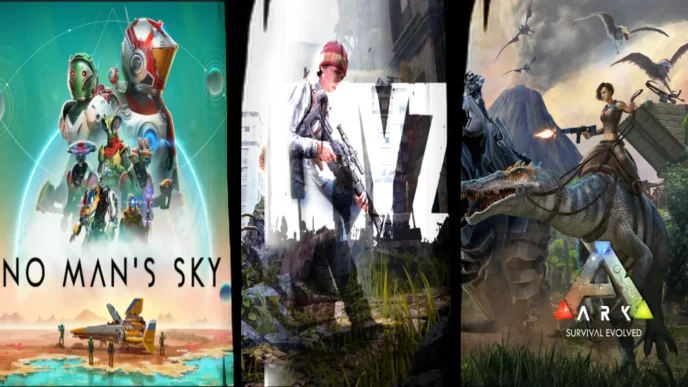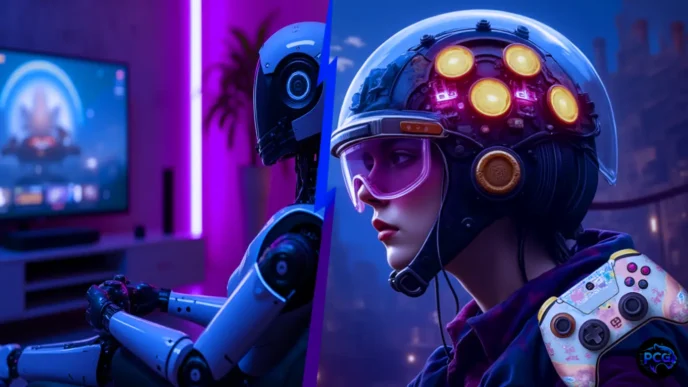You might be surprised to learn that over 70% of gamers report being emotionally moved by the narrative of a game at some point. Storytelling in Pixel games, with their minimalist aesthetic, are often overlooked for their storytelling potential, but they have a unique ability to evoke strong emotional responses. The simplicity of pixel art belies a complexity in narrative that can be incredibly impactful.

The charm of pixel game storytelling lies in its ability to convey deep narratives through simple visuals, making the experience feel both personal and universally relatable. This form of storytelling in pixel games taps into the player’s imagination, creating a powerful emotional connection.
Table of Contents
The Power of Minimalism in Pixel Game Narratives
Story-driven pixel games prove that less can be more when it comes to visual storytelling. By embracing minimalism, these games create a unique narrative experience that captivates players worldwide.
Key Takeaways
- Pixel games can evoke strong emotional responses despite their minimalist aesthetic.
- The simplicity of pixel art allows for complex narratives to shine.
- Pixel game storytelling creates a personal and relatable experience for players.
- The narrative in pixel games can be incredibly impactful.
- Emotional connections are a key aspect of pixel game storytelling.
How Less Becomes More in Visual Storytelling
In pixel games, the limited visual palette forces developers to focus on the essence of the story. This minimalistic approach can lead to a more engaging narrative, as every pixel counts. By stripping away unnecessary details, the core message becomes more apparent, drawing the player into the game’s world.
The Player’s Imagination as a Storytelling Tool
The simplicity of pixel art games leaves room for the player’s imagination to fill in the gaps. This interactive storytelling technique encourages players to become an active part of the narrative, enhancing their emotional investment in the game.
When Simplicity Creates Deeper Meaning
Pixel games demonstrate that simplicity can lead to a richer narrative experience. By leveraging the player’s imagination and focusing on the core story, these games create a lasting impact. The narrative in indie games, particularly those with pixel art, shows how less can indeed be more.
The Evolution of Storytelling in Pixel Games
The journey of storytelling in pixel games has been a remarkable evolution. From the early days of arcade simplicity to the complex narratives of modern pixel games, the art of storytelling has undergone significant transformations.
From Simplicity to Complexity
Initially, pixel games were constrained by technological limitations, resulting in simple narratives. However, as technology advanced, developers began to craft more intricate stories, leveraging the unique aesthetic of pixel art to convey impactful stories in retro games.
Key Milestones in Pixel Game Storytelling
Several key milestones mark the evolution of pixel game storytelling. Games like Super Mario Bros. and The Legend of Zelda introduced basic narratives, while later titles such as Chrono Trigger and Earthbound pushed the boundaries of storytelling in 2D games.
| Era | Notable Games | Storytelling Characteristics |
|---|---|---|
| Early Arcade | Super Mario Bros., The Legend of Zelda | Simple, straightforward narratives |
| Advancements | Chrono Trigger, Earthbound | More complex, character-driven stories |
| Modern Era | Undertale, Celeste | Emotionally deep, complex narratives |
Technological Constraints and Creativity
Technological constraints in early pixel games actually fostered creativity, leading to innovative storytelling methods. Developers used limited visuals and sound to convey pixel art emotional storytelling, often leaving room for player imagination.
The evolution of storytelling in pixel games is a testament to the creativity of developers and the enduring appeal of 2d games with great stories. As technology continues to advance, it’s exciting to consider how pixel game narratives will continue to evolve.
Why Storytelling in Pixel Games Creates Deeper Emotional Connections
When you dive into pixel games, you’re not just playing a game; you’re experiencing a narrative that resonates deeply with your emotions. The unique charm of pixel art lies in its ability to convey complex stories through simple, yet evocative visuals.
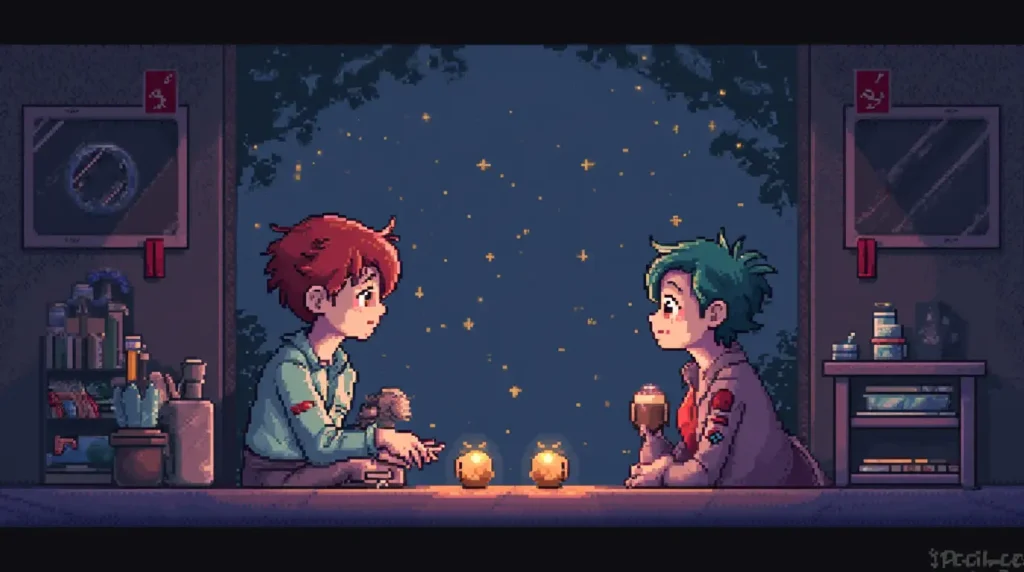
The Psychology Behind Pixel Art Attachment
The attachment you feel towards pixel art games stems from the psychological connection you make with the characters and the world they inhabit. This connection is fostered by the game’s ability to evoke emotions through minimalistic yet powerful storytelling.
How Abstraction Enhances Emotional Impact
Abstraction in pixel art allows for a level of emotional interpretation that is unique to this medium. By leaving some details to your imagination, pixel games encourage you to become an active participant in the storytelling process, thereby enhancing the emotional impact.
The Nostalgia Factor in Pixel Game Narratives
Nostalgia plays a significant role in the emotional resonance of pixel games. The retro aesthetics of these games often evoke childhood memories and a sense of nostalgia, making the gaming experience more emotionally engaging.
Childhood Memories and Gaming Experiences
For many, pixel games are a nostalgic reminder of their childhood gaming experiences. This nostalgia factor can significantly enhance the emotional connection you feel with the game, as it taps into fond memories and past experiences.
Cultural Significance of Retro Aesthetics
The retro aesthetics of pixel games also hold cultural significance, representing a nostalgic nod to the early days of gaming. This cultural context adds depth to the narrative, making the experience more impactful and memorable.
In conclusion, the combination of psychological attachment, abstraction, and nostalgia makes storytelling in pixel games a powerful tool for creating deeper emotional connections with you, the player.

Narrative Techniques Unique to Pixel Art Games
Pixel art games leverage unique narrative techniques to convey complex stories and emotions. These games have evolved to incorporate sophisticated storytelling methods that captivate players worldwide.
Environmental Storytelling Through Limited Visuals
Environmental storytelling is a key technique in pixel art games, where the environment itself tells a story. Limited visuals actually enhance this technique by focusing the player’s attention on crucial details. For example, in games like “Hyper Light Drifter,” the environment is used to convey a rich history and narrative.
Character Development Within Technical Constraints
Character development in pixel art games is achieved through subtle animations and interactions. Despite technical constraints, developers use character quirks and visual cues to make characters relatable and engaging.
Dialog and Text as Powerful Narrative Tools
Dialog and text play a crucial role in pixel art games, often used to reveal character backstories and advance the plot. Games like “Undertale” use text effectively to create emotional connections with players.
Music and Sound Design as Storytelling Elements
Music and sound design are vital narrative elements in pixel art games, setting the tone and atmosphere. They can evoke emotions and hint at events outside the player’s immediate experience.
| Game | Narrative Technique | Impact |
|---|---|---|
| Hyper Light Drifter | Environmental Storytelling | Rich history and narrative |
| Undertale | Dialog and Text | Emotional connections with players |
| Celeste | Music and Sound Design | Enhanced emotional experience |

By employing these narrative techniques, pixel art games create engaging and emotionally resonant experiences for players.
Case Studies: Emotionally Impactful Pixel Game Stories
Despite their retro aesthetic, pixel games are capable of delivering complex, emotionally resonant stories. You don’t need cutting-edge graphics to evoke strong emotions in players. The following case studies demonstrate how certain pixel games have achieved remarkable emotional impact through innovative storytelling and design.
Undertale: Subverting Expectations and Breaking the Fourth Wall
Undertale is a prime example of a pixel game that subverts player expectations. By allowing players to choose between killing or sparing monsters, the game challenges traditional RPG tropes. This mechanic, combined with its humorous and ironic narrative, creates a unique emotional experience.
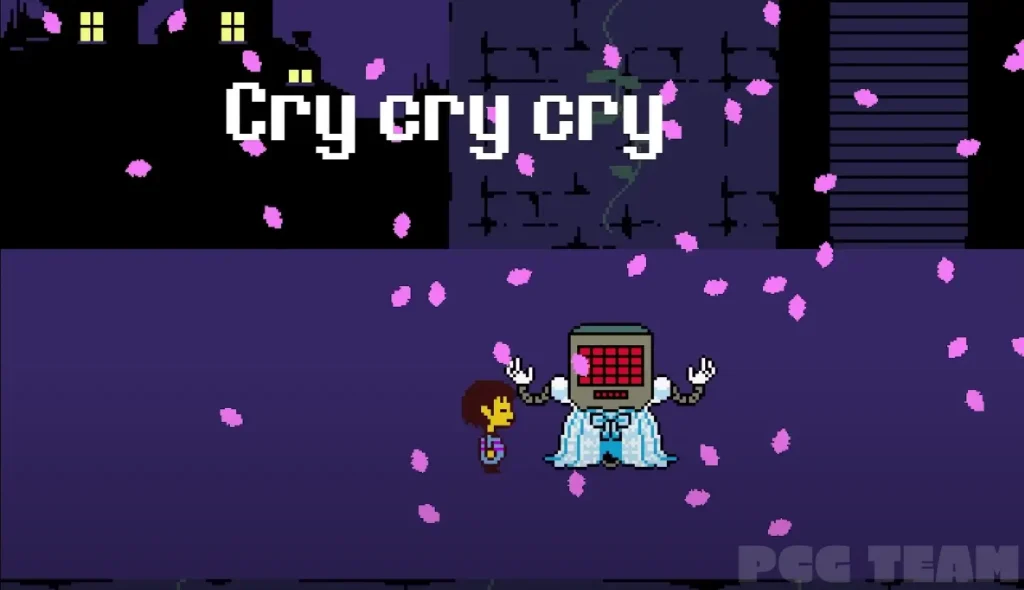
To the Moon: Crafting Emotional Depth in Simple Visuals
To the Moon showcases how pixel art can be used to tell a deeply emotional story. The game’s narrative follows the life of an elderly man, exploring themes of love, loss, and regret. The simple visuals allow players to focus on the story and its characters, creating a powerful emotional connection.
Celeste: Weaving Mental Health Narratives into Gameplay
Celeste tackles the challenging topic of mental health through its narrative and gameplay mechanics. The game’s protagonist, Madeline, struggles with anxiety and self-doubt, making the game relatable to many players. The tight gameplay and challenging levels mirror Madeline’s inner struggles, creating a strong emotional resonance.
Papers, Please: Political Commentary Through Pixel Art
Papers, Please uses pixel art to deliver a powerful political commentary. Players take on the role of a border control officer in a dystopian world, making difficult moral choices that impact the game world. The game’s narrative is both thought-provoking and emotionally challenging.
Stardew Valley: Building Community Through Pixel Interactions
Stardew Valley offers a more serene experience, focusing on building a life in a small town. The game’s pixel art style makes it easy to form connections with the characters and the world. The gameplay mechanics encourage players to engage with the community, fostering a sense of belonging and emotional investment.
| Game | Narrative Focus | Emotional Impact |
|---|---|---|
| Undertale | Morality and choice | Challenging player expectations |
| To the Moon | Love and memory | Emotional storytelling |
| Celeste | Mental health | Relatability and challenge |
| Papers, Please | Political commentary | Moral dilemma |
| Stardew Valley | Community building | Sense of belonging |
These case studies demonstrate the diverse ways in which pixel games can achieve emotional impact. By leveraging narrative techniques, gameplay mechanics, and the unique qualities of pixel art, these games create memorable and emotionally resonant experiences.
Your Role in Pixel Game Narratives: Player Agency and Emotional Investment
In pixel games, the line between the player and the protagonist blurs, creating a deeply personal and engaging narrative experience. This connection is fostered through various mechanisms that encourage emotional investment and player agency.
How You Become Part of the Story
You become part of the story through interactive elements that allow you to influence the narrative. This can be achieved through character development, where your choices affect the protagonist’s personality or abilities.
The Impact of Your Choices in Pixel Game Worlds
Your decisions in pixel games can significantly impact the story, leading to multiple endings or altering the narrative’s direction. This interactivity enhances your emotional attachment to the game world.
Why You Form Stronger Bonds with Pixel Characters
Forming stronger bonds with pixel characters involves psychological processes such as projection and identification. These processes allow you to connect with characters on a deeper level.
Projection and Identification
Projection involves attributing your own feelings or characteristics to the characters, while identification is about seeing yourself in their struggles and triumphs. Both processes are crucial for emotional engagement.
Emotional Attachment Through Gameplay
Emotional attachment is further strengthened by gameplay mechanics that require you to make meaningful decisions or take actions that have consequences. This active participation fosters a sense of responsibility and connection to the narrative.
By engaging with pixel games, you’re not just playing a game; you’re experiencing a story that evolves based on your actions. This dynamic creates a unique and personal connection to the narrative, making the experience more impactful.
- Pixel games encourage emotional investment through interactive storytelling.
- The player’s choices significantly impact the narrative direction.
- Psychological processes like projection and identification enhance character bonding.
The Indie Revolution: How Small Studios Changed Game Storytelling
The rise of indie game studios has led to a renaissance in pixel game storytelling, offering fresh perspectives and personal stories. You are witnessing a significant shift in how games are developed and the narratives they convey.
Freedom from Commercial Constraints
Indie developers have the freedom to experiment with unique narratives and gameplay mechanics, unencumbered by the commercial pressures faced by larger studios. This freedom allows for the creation of innovative and often more personal stories.
Personal Stories in Indie Pixel Games
Many indie pixel games are characterized by their personal and relatable storytelling. Developers often draw from their own experiences, creating narratives that resonate deeply with players. You can see this in games that tackle complex themes with simplicity and elegance.
Community Building Around Narrative-Driven Pixel Games
The indie game community has fostered a culture of community building around narrative-driven games. Players and developers interact closely, sharing experiences and interpretations of game narratives, enriching the overall gaming community.
| Aspect | Indie Studios | Large Studios |
|---|---|---|
| Creative Freedom | High | Moderate to Low |
| Narrative Focus | Personal and Experimental | Mainstream and Commercial |
| Community Engagement | High | Varies |
Accessibility of Development Tools and Democratization of Game Creation
The accessibility of game development tools has democratized game creation, allowing more developers to enter the market. This has led to a proliferation of diverse narratives and storytelling styles in pixel games, enriching the gaming landscape.
You are part of a vibrant ecosystem where indie studios continue to push the boundaries of pixel game storytelling, offering unique and compelling narratives that captivate audiences worldwide.
Technical Limitations as Creative Catalysts
You might be surprised at how the limitations of pixel art have fostered a new wave of creative storytelling in games. The technical constraints of pixel games have often been seen as a challenge, but they have also become a driving force behind the innovative narratives found in these games.
How Constraints Foster Innovative Storytelling
The limited resolution and color palette of pixel art force developers to be creative with their storytelling techniques. By focusing on essential elements of the narrative, pixel games can convey complex emotions and stories through simplicity. This minimalist approach to storytelling can make the narrative more impactful.

The Art of Suggestion in Limited Visual Spaces
In pixel games, the art of suggestion plays a crucial role in narrative development. By leaving some things to the player’s imagination, these games encourage engagement and interpretation. This technique not only enhances the storytelling experience but also makes it more personal and immersive for the player.
Sound Design as a Narrative Amplifier in Pixel Games
Sound design is a critical element in pixel games, often serving as a narrative amplifier. The soundtrack and sound effects can evoke emotions, signal important events, and enrich the overall narrative. By leveraging sound effectively, developers can compensate for the visual limitations and create a more engaging story.
When Technical Boundaries Push Creative Solutions
Technical limitations in pixel games often push developers to find creative solutions. This can lead to innovative storytelling methods that might not have been discovered otherwise. For instance, using environmental clues, character interactions, and player inference to tell the story.
| Storytelling Technique | Description | Example |
|---|---|---|
| Minimalist Approach | Focusing on essential narrative elements | Celeste |
| Art of Suggestion | Leaving narrative details to the player’s imagination | Undertale |
| Sound Design | Using sound to enhance the narrative and evoke emotions | To the Moon |
The Future of Narrative Design in Modern Pixel Games
Modern pixel games are poised to redefine the boundaries of narrative design by merging traditional pixel art with cutting-edge storytelling techniques. This blend of old and new is creating exciting opportunities for game developers to craft compelling stories that captivate players.
Blending Traditional Pixel Art with New Storytelling Technologies
The integration of advanced narrative tools with the nostalgic charm of pixel art is enhancing the storytelling capabilities of indie game developers. Pixel art games with deep stories are becoming increasingly popular, as they offer a unique blend of visual simplicity and narrative complexity.
Emerging Trends in Pixel Game Narratives
Some of the emerging trends in pixel game narratives include:
- Interactive storytelling that allows players to influence the narrative
- Emotional depth achieved through simple yet effective visuals
- Innovative use of sound design to enhance the narrative experience
These trends are contributing to the evolution of best story pixel games that resonate with players on a deeper level.
Cross-Platform Storytelling Opportunities
The rise of cross-platform play is opening up new opportunities for narrative in indie games to reach a wider audience. By allowing players across different platforms to interact and share in the story, developers can create a more unified and immersive narrative experience.
How Pixel Games Continue to Innovate in the Narrative Space
Pixel games continue to innovate in the narrative space by pushing the boundaries of what is possible with limited visuals. Through creative storytelling and innovative use of technology, developers are able to craft compelling narratives that engage and captivate players.
Conclusion: Why Pixel Game Stories Will Continue to Resonate
Pixel game stories have a unique ability to resonate with you, the player, on a deep emotional level. The art of storytelling in pixel games has evolved significantly, leveraging the strengths of minimalist visuals to convey complex narratives and evoke powerful emotional responses.
The pixel game emotional impact is rooted in the simplicity and abstraction of pixel art, which fosters a strong connection between you and the game world. Emotional pixel art games like Undertale and Celeste have demonstrated the potential of this medium, using environmental storytelling, character development, and sound design to craft compelling narratives.
As the gaming landscape continues to evolve, storytelling in pixel games will remain a vital part of the medium’s appeal. The unique blend of nostalgia, emotional resonance, and creative freedom ensures that pixel game stories will continue to captivate audiences and inspire developers alike.
FAQ
What makes pixel game storytelling so impactful?
Pixel game storytelling is impactful because it often relies on minimalism, leaving room for the player’s imagination to fill in the gaps, and creating a more personal connection to the narrative.
How do pixel games convey complex narratives despite their visual simplicity?
Pixel games use various techniques such as environmental storytelling, character development within technical constraints, and the strategic use of dialog, text, music, and sound design to convey complex narratives.
Can you give examples of emotionally impactful pixel games?
Games like Undertale, To the Moon, Celeste, Papers, Please, and Stardew Valley are notable examples of pixel games that have created emotionally resonant experiences for players.
How do technical limitations in pixel games influence their storytelling?
Technical limitations can act as creative catalysts, fostering innovative storytelling, encouraging the art of suggestion in limited visual spaces, and making sound design a crucial narrative amplifier.
What role does the player play in pixel game narratives?
The player becomes an active participant in the story through their choices and actions, forming stronger bonds with pixel characters due to psychological aspects like projection, identification, and emotional attachment through gameplay.
How have indie studios impacted pixel game storytelling?
Indie studios have brought a wave of personal and innovative storytelling to pixel games, unencumbered by commercial constraints, and have facilitated community building around narrative-driven games.
What is the future of narrative design in pixel games?
The future of narrative design in pixel games involves blending traditional pixel art with new storytelling technologies, emerging trends in pixel game narratives, and leveraging cross-platform storytelling opportunities.
Why are pixel games still emotionally resonant despite their retro aesthetic?
Pixel games remain emotionally resonant due to their ability to tap into nostalgia, their use of abstraction to enhance emotional impact, and the psychological attachment players form with the characters and stories.
How do pixel games use environmental storytelling?
Pixel games use environmental storytelling by conveying narrative elements through the game’s environment, such as level design, background details, and other visual cues, to tell the story without relying on complex graphics.
What is the significance of sound design in pixel game narratives?
Sound design plays a crucial role in pixel game narratives by amplifying the emotional impact of key moments, setting the tone for the story, and providing auditory cues that enhance the overall storytelling experience.

